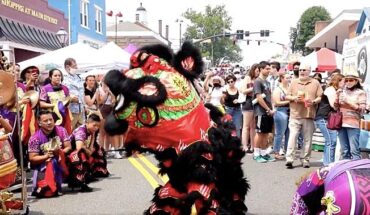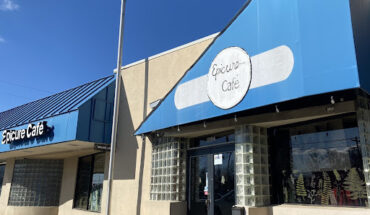This story was originally published in the Mar 2 print issue of Fourth Estate.
According to the National Human Trafficking Resource Center, Virginia is one of the top five areas in the United States for human trafficking, and the Northern Virginia Human Trafficking Task Force has been working to end this trade.
While the Northern Virginia Human Trafficking Task force has existed since 2004, they were not active until 2013 when they received a $1 million grant from the Department of Justice.
“We have identified over 160 victims in the past 18 months, victims who otherwise would not have been offered services,” said Detective William Woolf, head of the Fairfax County Police Department Human Trafficking Unit. “It’s hard to give good numbers because we haven’t been tracking them for a long period of time.”
In a recent presentation to parents of students in the Fairfax County School system, the success of the task force in its first year was broken down: the task force received 156 leads, offered 108 victims services, identified 261 victims, and identified 76 suspects. The task force has also discovered that 17% of the leads they receive are gang-related.
Woolf describes the primary reason for the prevalence of trafficking in the Northern Virginia area – money. Fairfax County is one of the wealthiest counties in the United States, and it is because of this that many people were in disbelief when the underground human trafficking came to the attention of the public. Mason junior Michael Bamarni attended Oakton High School, and said that he was “shocked” when he found out about the problem last year. Although Bamarni graduated from Oakton High School in June 2012, he only just heard about the problem from friends last year.
“I think many people believe that problems like this only occur in low socio-economic areas with undereducated populations, and that is simply not true,” Woolf said.
Wolf stated that the second reason human trafficking has grown here has nothing to do with Fairfax County. One thing that human traffickers look for is young adults or children with low self esteem, and it is these potential victims that they approach, whether in person or online, and some victims have even been approached on the Metro.
“These are vulnerabilities that exist across all areas,” Woolf said.
In January of 2014, the Northern Virginia Human Trafficking Task Force created a website to inform citizens of the Commonwealth about this problem. The “Just Ask” prevention project is a website that features information that defines human trafficking, who is most vulnerable, how to recognize signs of human trafficking and resources for victims.
The website states that girls and boys between the ages of 12 and 19 are the targeted demographic, and Woolf added to this saying that the “peak age” of victims is from 16 to 17. Woolf said that they had not seen any specific cases of human trafficking on college campuses in the area. However, he said areas around college campuses are areas that are prone to sex trafficking, because there is a large client base surrounding the campuses.
Mason Chief of Police Eric Heath corroborated this, saying that, “We have not seen this particular issue leak into the college environment, specifically here at Mason.” He added, “The Fairfax County Police Department’s task force dedicated to this issue has provided a great deal of education to all of the Northern Virginia area law enforcement agencies should they encounter this issue and Mason Police would work heavily with the FCPD should any future incidents be reported on campus.”
Woolf said many of the victims that have come forward or are receiving services would not have been discovered had it not been for the “Just Ask” prevention campaign.
“Just Ask” defines teen sex trafficking as “the act of manipulating or forcing anyone under the age of 18 to engage in a sexual act in exchange for anything of value (money, drugs, food, shelter, clothes, etc.).” The site states that girls and boys between the ages of 12 and 19 are the targeted demographic, regardless of their race or socio-economic background. Rather, they look for teens that are exhibiting signs of psychological or emotional vulnerability, whether it in person or through social media.
Sophomore Amanda Olsen graduated from Woodson High School in June 2013.
“I never saw any evidence of human trafficking when I was in high school in Fairfax County, nor did I hear it discussed amongst students or faculty,” Olsen said. “I knew that human trafficking occurred, but I had no idea how prevalent the issue was until late 2014.”
Olsen believes that one of the reasons that human trafficking has taken root in this area does have something to do with its geographical location.
“I think part of the reason it has become so prevalent is our proximity to D.C.,” Olsen said. “There are two international airports within an hour and a half of the area, which may make it easier to export the victims.”
Woolf referred to human trafficking as the second largest criminal enterprise in the world, and the Northern Virginia area finds itself on a list with California, Texas, Florida and New York. Virginia is the state with the fifth highest number of reported cases of human trafficking, according the NHTRC. This organization works with the Polaris Project, which reviews the laws in each state that combat human trafficking and work to provide resources to victims and rates them annually.
In 2014, Virginia received a grade of “D” from the organization, and they explained why: “Virginia does not have a human trafficking or sex trafficking law. The abduction law is used to prosecute cases of sex trafficking; however, minors are not considered abduction victims unless they are subject to force, intimidation or deception and minor face delinquency charges for prostitution offenses.”
According to the report made by the Polaris Project, potential offenders may be deterred by “felony penalties, sex offender registration and asset forfeiture for violations of commercial exploitation of a minor.” However, there are no laws to prevent or punish violators that exploit victims by manipulating them into human trafficking.
Photo Credit:Johannah Tubalado




